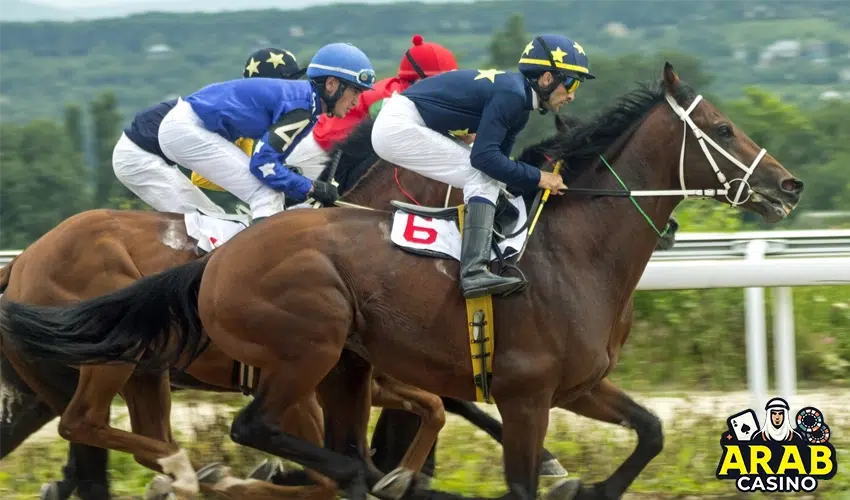Tips to Pick a Good Horse for Betting and Winning
Picking a good horse is not easy. It requires careful planning and understanding of different types of horse racing bets, analyzing stats and previous performances, etc. However, here are the best ways to choose the best horse for betting and winning:
- Research horses and jockeys
- Observe the Horses
- Set a budget
Research Horses and Jockeys
Start by accessing detailed race reports from databases like Brisnet or Equibase. These platforms provide comprehensive stats, including race results, speed ratings, and class analysis. For jockeys, consider their win rates, place finishes, and showings over various periods, which you can find in tailored reports from sources like Thoroughbred Analytics.
Track conditions significantly influence a horse’s performance; different surfaces affect speed and stamina. Previous horse racing betting results offer a performance baseline, indicating a horse’s ability to handle various track states. Analyzing these factors is essential for predicting outcomes and making informed betting decisions.
Observe the Horses

A winning horse often reveals itself through subtle cues in its demeanor and physical condition. You can observe the horse:
- In the Paddock
- On the Track
In the Paddock
Look for a horse that appears calm and alert, not overly agitated or sweating profusely. Signs of good health include a shiny coat, bright eyes, and a relaxed, rhythmic walk. Take note of the horse’s musculature; a well-defined physique suggests fitness and power.
On the Track
During the warm-up, observe the horse’s gait. A fluid, balanced stride indicates suppleness and agility. Watch how the horse responds to its jockey’s cues; a responsive horse that moves effortlessly under control is often a good sign.
Set a Budget and Stick to it

Sports betting is thrilling, but it is crucial to remember it is a form of entertainment, not a guaranteed income source. Responsible betting means setting a budget you are comfortable losing and sticking to it religiously. So, this budget should not impact your essential expenses like rent, bills, or groceries. To manage your bankroll effectively, consider these strategies:
Fixed Stakes
Allocate a specific amount for each bet, regardless of your perceived chances of winning. It is a disciplined approach that prevents impulsive decisions and emotional betting. For example, if you set a budget of $100 for a week of horse races, you might decide on a fixed stake of $10 per race. So, this way, you spread your bankroll across multiple races and avoid going all-in on a single race, even if you feel strongly about a particular horse.
Percentage Betting
Bet a percentage of your remaining bankroll, adjusting it based on wins and losses. We prefer this method because it scales your bets proportionally to your funds, ensuring longevity. If your starting bankroll is $100 and you set a 5% stake, your initial bet would be $5. If you win that bet, your bankroll increases to $105, and your next 5% stake would be $5.25.
Conversely, if you lose your first bet, your bankroll shrinks to $95, and your next 5% stake dips to $4.75. Remember, this approach prevents you from overextending yourself during winning streaks and protects your bankroll during losing ones. It injects a level of flexibility into your betting strategy while promoting sustainable bankroll management.
Kelly Criterion
It is a more advanced strategy for experienced bettors. It involves calculating the optimal bet size based on your perceived edge over the sportsbook (meaning how much value you believe you have in your bet) and the odds offered.
Let’s say you strongly fancy Horse A in an upcoming race. You have analyzed the horse’s form, jockey, and track conditions and believe it has a 60% chance of winning. However, the sportsbook lists its odds at +110 (meaning a $100 bet would win you $110). In this scenario, your perceived edge is 10% (60% – 50%, where 50% represents the chance implied by the odds).
Final Thoughts on Picking a Horse for Betting
Horse racing is more than just betting; it is a spectacle of athleticism, strategy, and passion. By approaching it with knowledge, discipline, and a sense of fun, you can make the most of this exhilarating sport.










